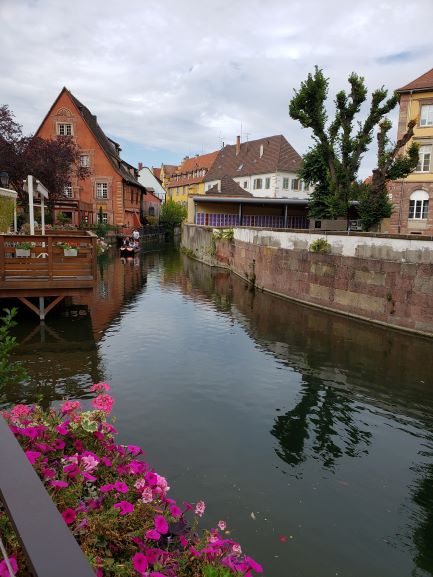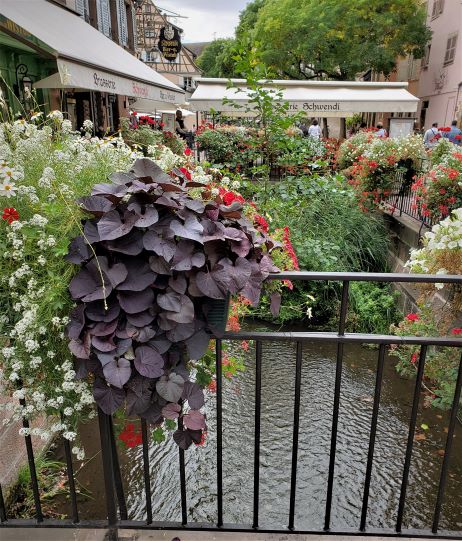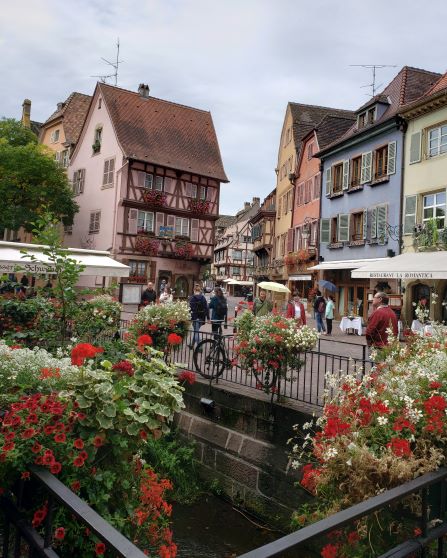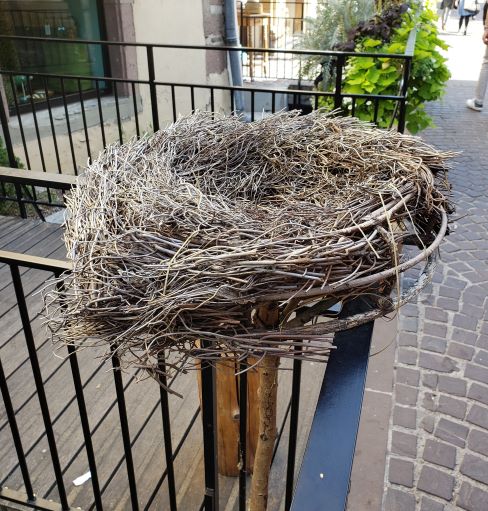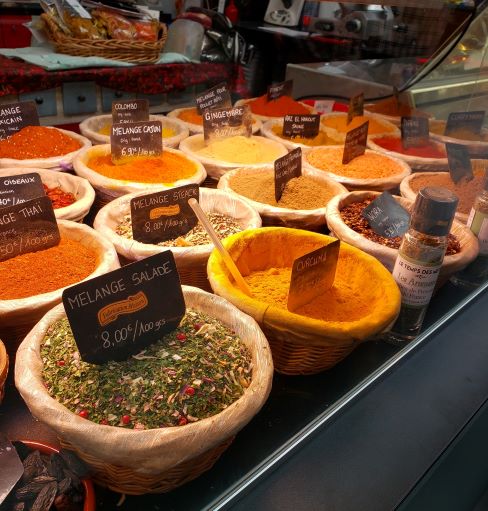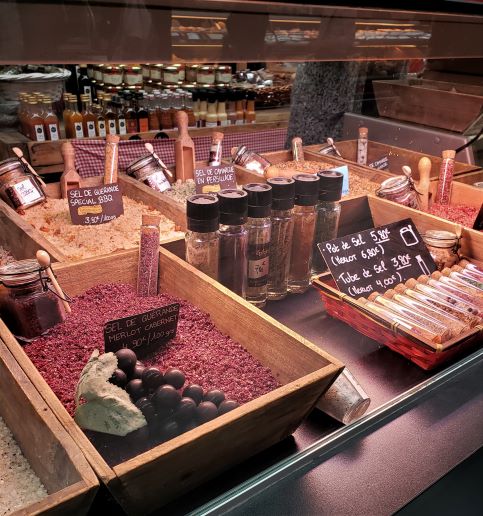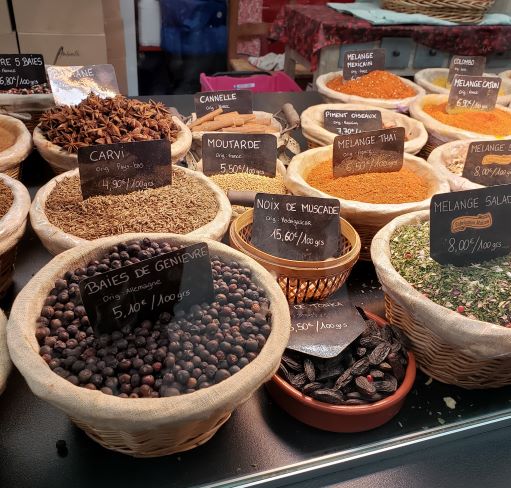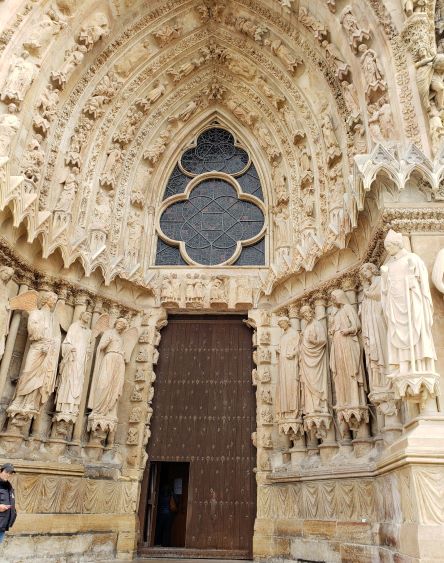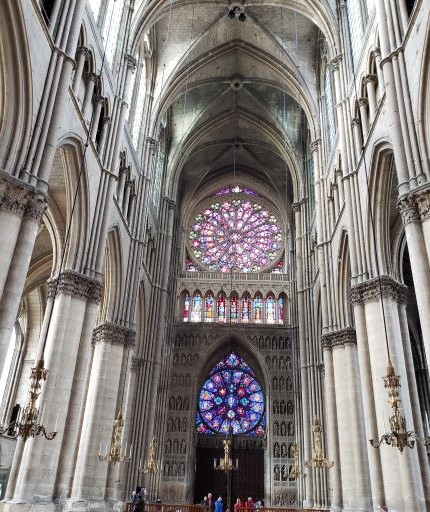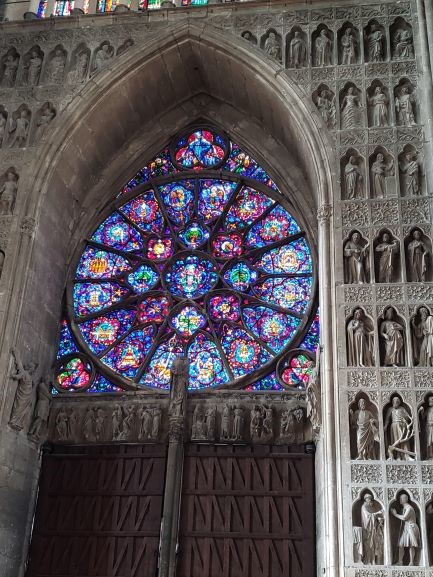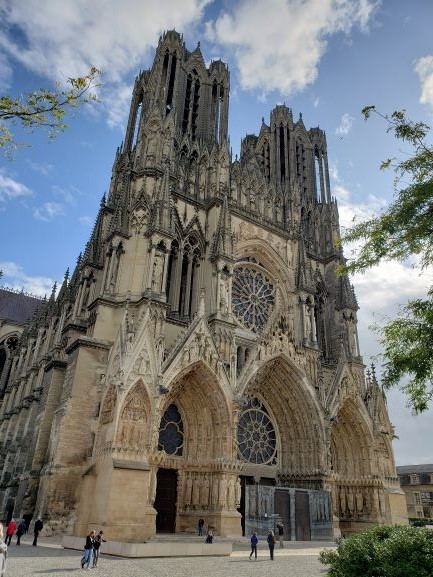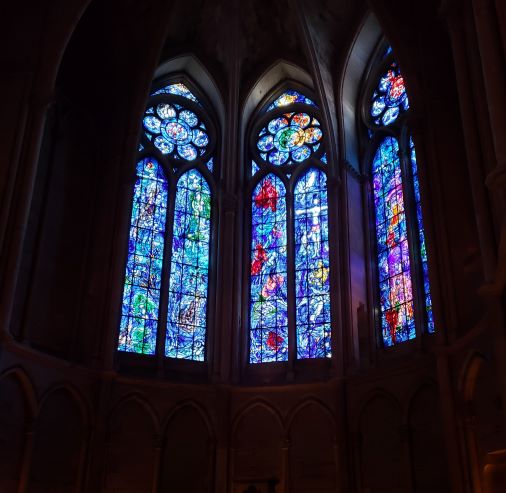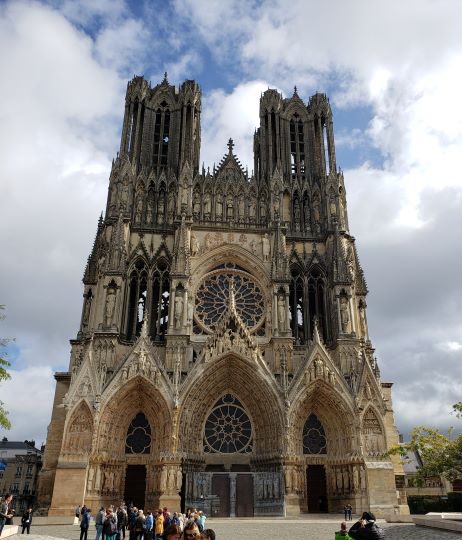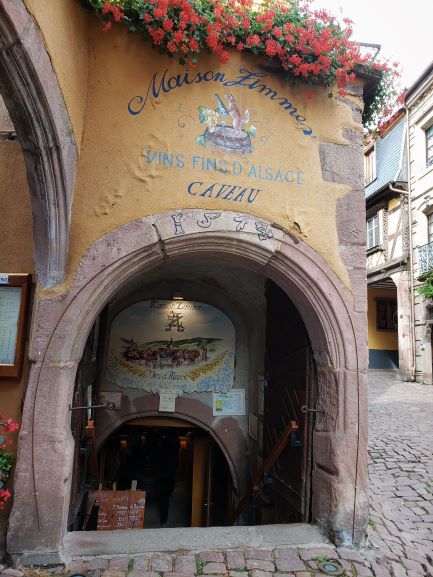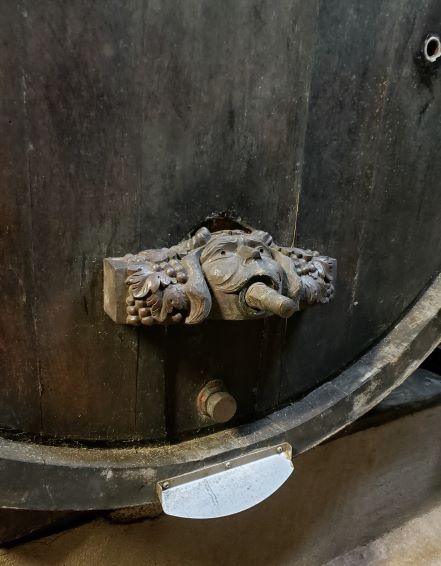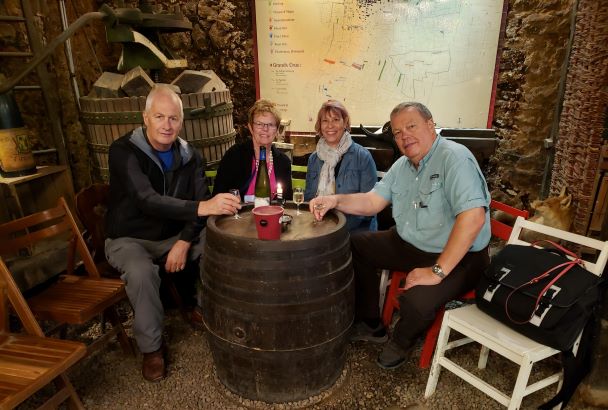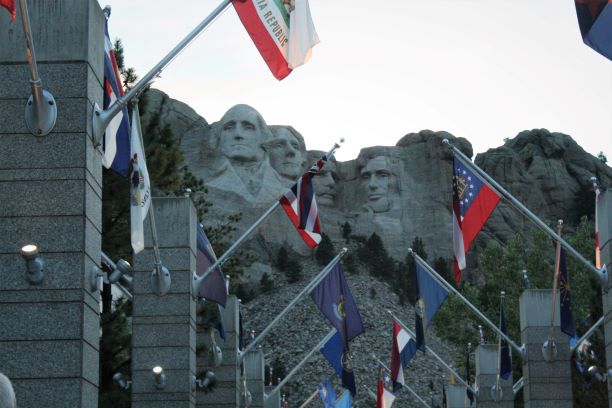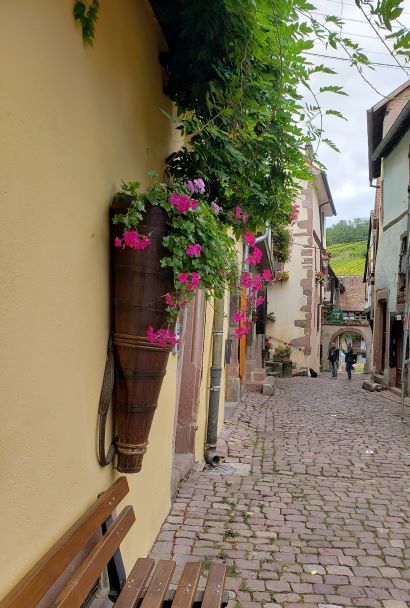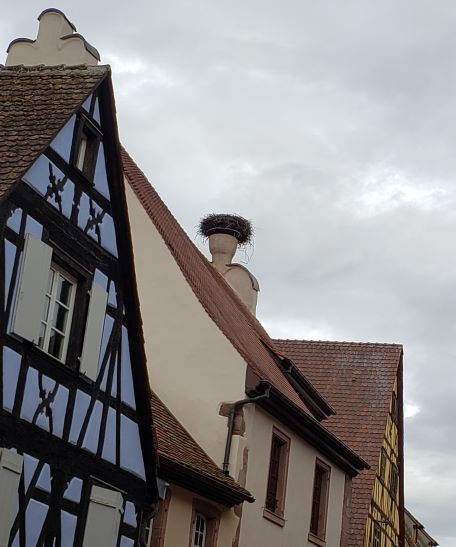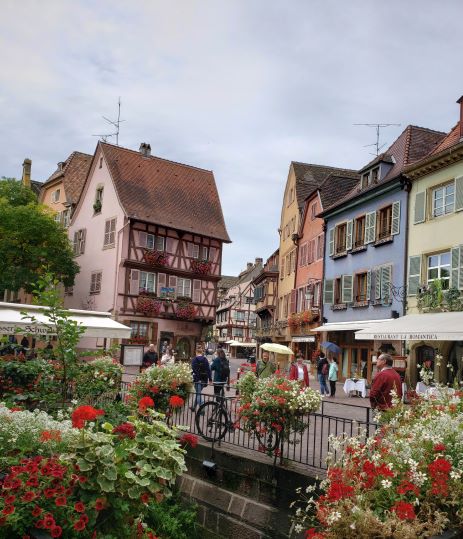
I’m not sure you can find an ugly building in the center of Colmar. As you get closer to the Quai de Poissoniers, nicknamed Petit Venice, you will find a row along the canal of picture-perfect houses. Many are half-timbered houses painted in shades of pink, yellow, and sky blue.
Some of these buildings date back to the 14th century. Many survived multiple wars, seemingly unscathed. This was the old merchants’ quarter where tanners, butchers, and fishmongers lived.
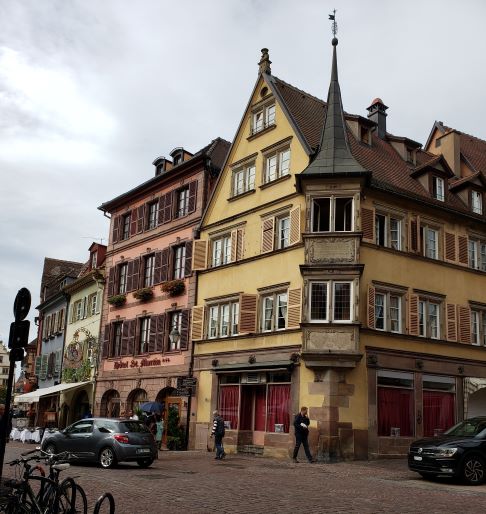
The story goes that different colors were used to display different types of businesses. If you were a fisherman your house was blue. A butcher would have a red house.
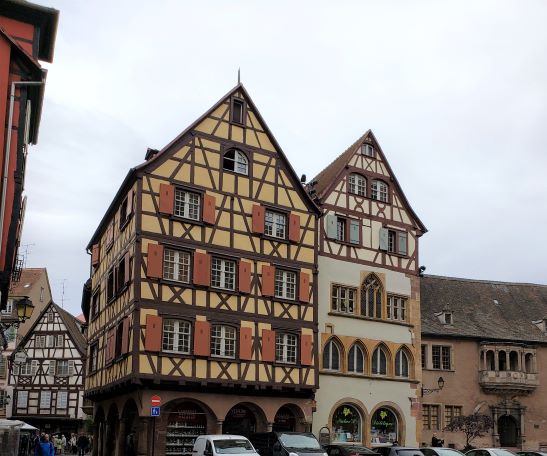
Other buildings offer a mix of French and German influence. Half-timbered, storks nests on the chimneys, and signs displaying what the home or building was once for are common along all the main streets and back alleys.
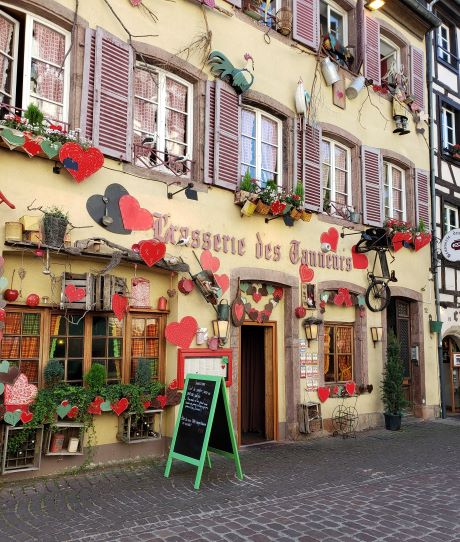
This is a great town for walking.
In the summer this area will be filled with tourists taking pictures, riding the flat-bottomed boats in the canal, and relaxing with a glass of wine or beer at one of the many sidewalk cafes.
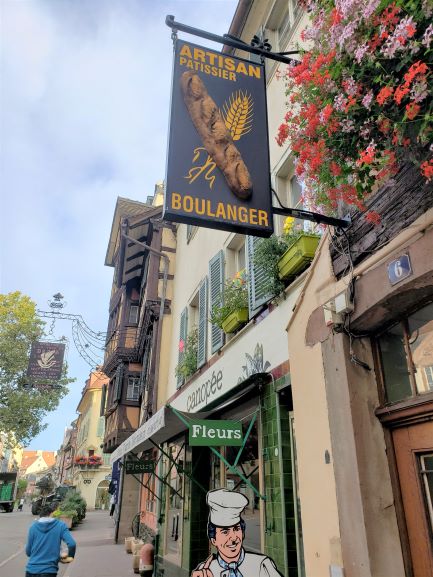
Want less people? Head to Colmar in early May or late September.
